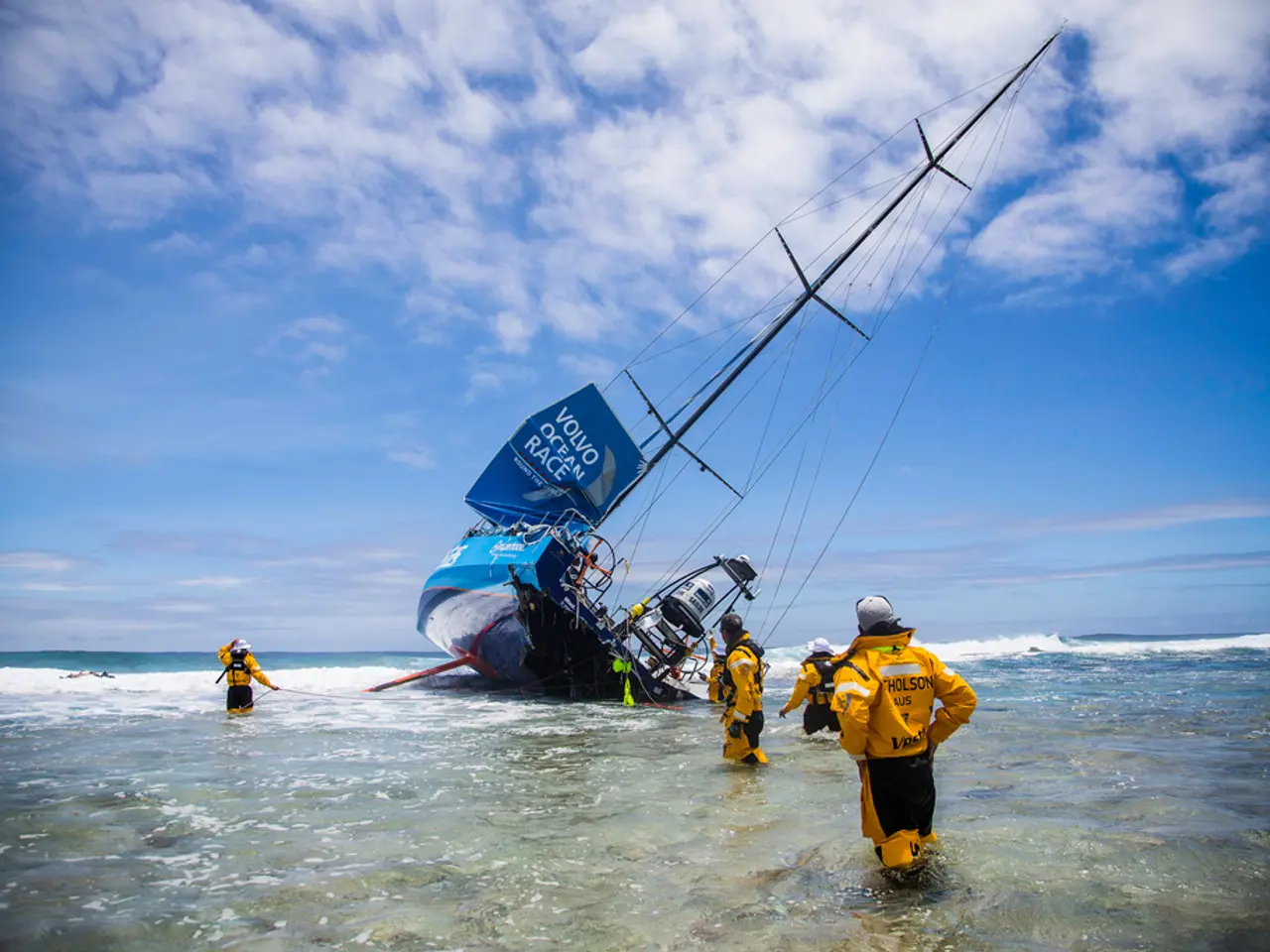Corporate culture's impact on the Titan implosion: an exploration of OceanGates' internal workings leading to the calamity
In a shocking turn of events, the OceanGate Titan submersible imploded at a depth of over 3,000 meters during an expedition in June 2023, claiming the lives of all five passengers, including the CEO of OceanGate. The U.S. Coast Guard's subsequent report reveals that the catastrophe was primarily caused by safety, testing, and maintenance deficiencies at OceanGate.
The report points to a toxic corporate culture at OceanGate as a significant contributing factor. In this environment, employees and partners found it challenging to openly discuss safety concerns, and criticism was rare. David Lochridge, an experienced marine expert with a background in the Royal Navy and as a submersible pilot, was hired by OceanGate to plan dives and steer the Titan. Lochridge reported serious safety concerns about the Titan to OSHA in 2018, but his warnings were met with resistance, and the planned independent safety inspection was cancelled.
The inquiry also revealed that the Titan’s pressure hull, made of carbon fiber, was insufficiently tested and poorly understood. The carbon fiber material, while strong, was unreliable under deep-sea pressure. The vessel's design had flaws in thickness, winding, and curing procedures, which compromised the hull’s structural integrity.
OceanGate depended heavily on a real-time hull monitoring system rather than comprehensive engineering analysis and conservative safety margins to assess vessel integrity. Previous damages to the submersible were ignored, and important maintenance and safety analyses were neglected by OceanGate.
The report further uncovers that OceanGate's CEO, Stockton Rush, ignored, concealed, and neglected safety and structural problems. He used loopholes to evade oversight, misrepresented passengers as "mission specialists" to avoid scrutiny, and perpetuated a false narrative of the vessel being “indestructible,” providing passengers and regulators with a false sense of safety.
The lack of regulatory framework for innovative submersibles like Titan also played a role. Investigators noted that existing government oversight mechanisms were inadequate or non-existent for such technology, though this was not deemed a direct cause of the implosion. The report recommended establishing regulatory oversight for submersible operators and builders internationally and domestically.
In conclusion, the Titan implosion was a preventable tragedy rooted in flawed engineering, poor maintenance, abusive corporate culture, and leadership negligence, compounded by ineffective regulatory oversight for this kind of novel submersible technology. The loss of life serves as a stark reminder of the importance of prioritising safety and transparency in the development and operation of advanced technology.
[1] U.S. Coast Guard Report on OceanGate Titan Implosion [2] David Lochridge's Report to OceanGate's Management (2018) [3] Tony Nissen's Statement on OceanGate's Culture [4] OceanGate's Response to Lochridge's Safety Concerns [5] Investigative Journalism Report on OceanGate's Safety Deficiencies (2023)
- The U.S. Coast Guard Report on OceanGate Titan Implosion highlights the role of technical deficiencies, such as inadequate testing and understanding of the carbon fiber pressure hull, insufficient real-time hull monitoring, and disregard for previous damages and essential maintenance.
- David Lochridge, a marine expert with a background in the Royal Navy, reported serious technical concerns about the Titan to OSHA in 2018, but his warnings were met with resistance, exemplifying a challenging environment where openly discussing safety concerns was a rarity.




